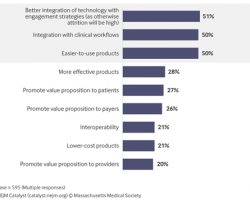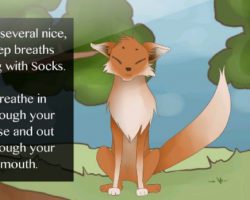TECHNOLOGY IMPACTS ROLE OF PATIENTS IN HEALTH CARE
July 16, 2018
Role of Patients in Health Care is shifting by use of Technology.
Network enabled technology is changing the way health care is being delivered. With increased adoption of telecommunication services, the current landscape for patient care is moving out of the hospital walls. Let’s look at three distinctive trends on how the role of patients in health care is shifting by the use of technology:
1. Increased Use of Patience Portals
Portals may allow patients to view pathology sample reports, X-ray and nuclear medicine reports, Immunization Status, Physician Notes on disease status, request prescription refills, seek referrals, pay bills, schedule appointments and participate in surveys. While developing tools for patient, the patient satisfaction scores are most important. Areas of focus while developing such tools are:

Fig 1. Areas of Future Focus for Patient Engagement Technology Tool Companies
Source: https://catalyst.nejm.org/patient-engagement-technology-good-for/
‘Change Healthcare’ has teamed with Adobe and Microsoft (Azure) to build on a new platform that will aggregate patient data from various sources for a more seamless and user-friendly patient experience. IBM Watson Health, Google DeepMind have already been in the race to build portals for physicians and patients. IBM patient portal connects patients to Watson Clinic and facilitates treatment.
2. Gamification and Patient Engagement
Gamification has mixed self-monitoring and entertainment to promote a healthy behavior change. It has also reduced the apprehension of patients towards the medications. The self-monitoring apps and Fitbit fitness wearable will use Google’s cloud for healthcare to send the data to doctors. Besides these, Gamification is being used to treat chronic diseases, addiction, anxiety and other mental health challenges.

Helio app from Novartis includes education, monitoring tools and gamification components for COPD (Chronic Obstructive Pulmonary Disease ) patients.
Source: https://invivo.com/portfolio/medical-mobile-apps-helio-copd/

Litesprite’s mobile application, Sinasprite, helps patients proactively manage their chronic illnesses, including mental illnesses (anxiety, depression, stress, substance abuse), cancer, and diabetes.
3. Patients need to take greater accountability for own care
Precision medicine, personalized medicine, precision health and even precision care. All these are transforming care delivery into a next generation. Patients are active, informed and participate in the latest tests and treatments. They have been considered as co-innovators They provide important data in the evolving standardization of treatment and are not the recipients of treatment alone.

Fig.2 Shifting Digital Engagement of Patients
Source: https://medtechengine.com/article/ehealth-western-europe/
With this flip in thinking and technology, where earlier patients were typically the last to know about their own health information, patients are now changing their behavior and have more insight of their own body. The Doctor centered approach is changing to a Patient centered approach. Technology is bound to make humans healthier!!

 English | EN
English | EN 